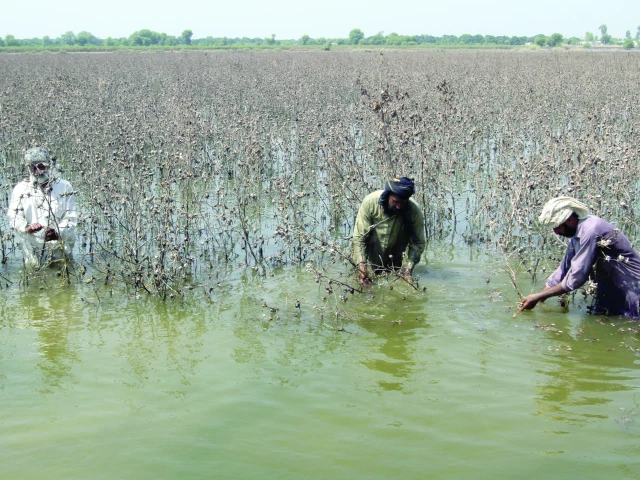Lahore:
The PML-N LED Punjab government has prepared an RS500 billion relief package for flood victims, sources say. The plan aims to compensate for losses and provide financial assistance to millions of people affected along the banks of three rivers during recent rain and floods.
Payments are made through the Punjab government’s emergency card. Families whose houses were completely destroyed will receive RS1 million, while, whose homes were partially damaged, will receive Rs 500,000.
According to sources, 63,200 brick houses and 309,684 mud houses were damaged in the floods. Compensation will also be given for loss of cattle, including cows and buffaloes.
Farmers whose crops were destroyed will be compensated at a rate of 20,000 RS per year. Acre. The package also includes the rehabilitation of roads, bridges and other infrastructure.
Massive floods have hit both the rural heart and industrial centers for the first time in decades, causing billions of dollars in damage while struggling food supplies, exports and a fragile economic recovery.
The government had been optimistic around 2026, pencil in 4.2% growth on the back of a rebound in agriculture and manufacture after the economy was stabilized under an international monetary fund of $ 7 billion.
Instead, since the end of June, record monitoring has been reinforced by dams releases from India, submerged large shards of Punjab.
While Waters has not yet disappeared in many districts, officials and analysts warn that hit could be deeper than in 2022, as a third of the country was under water due to double shock to agriculture and manufacture.
In Punjab, Pakistan’s rice, cotton and corn engine, 1.8 million Acres agricultural land has been flooded, according to Provincial Disaster Management Agency. “About 50% of the rice and 60% of the crops cotton and corn have been damaged,” said Khalid Bath, president of the Pakistan Farmers Association.
He said losses could exceed 2.5 million Acres, worth up to RS1 trillion ($ 3.53 billion). “This is in contrast to something we have seen in recent decades,” said Iqrar Ahmad Khan, former rector of the University of Agriculture Faisalabad.
He estimates that at least one tenth of the country’s crops are destroyed, with vegetable losses on top of 90% in some districts.
The timing is dangerous: Pakistan is about to sow wheat, the crop, which gives almost half of the country’s caloric intake.
National reserves remain comfortable after a strong harvest from 2024, according to crop monitor, but the window is in danger in fields that are still smooth with silt and mud. “Food security is coming, not just higher prices,” Khan warned.



